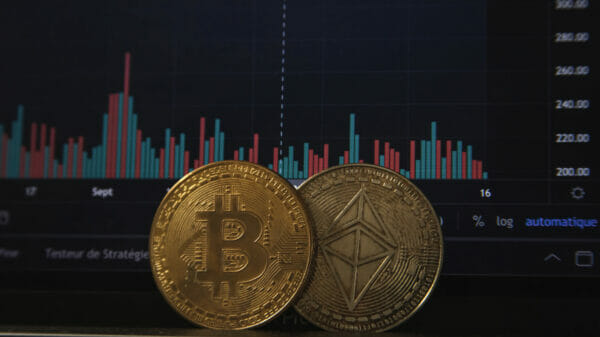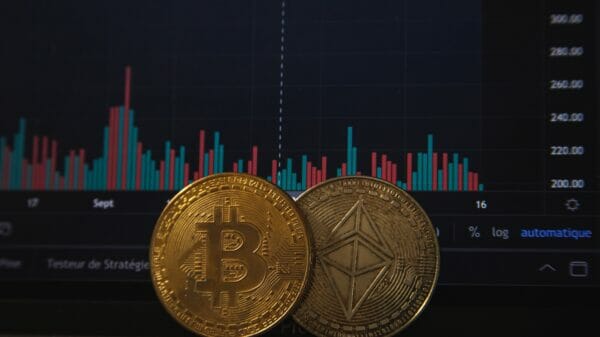Bitcoin (BTC) experienced a sudden $1,420 decline in just one hour on March 3 due to Silvergate Bank’s stock plummeting by 57.7% because of significant losses and financial troubles. The bank was vital for financial services in the crypto industry, serving exchanges, institutional investors, and mining companies. Concerns have arisen about the potential negative effects on the crypto sector if the bank were to collapse.
The crypto-friendly bank decided to halt its digital asset payment system, the Silvergate Exchange Network (SEN), citing high risks. Silvergate borrowed $3.6 billion from the U.S. Federal Home Loan Banks System to counter the impact of increased withdrawals.
One of the affected platforms was Bybit, based in Dubai, which announced the suspension of U.S. dollar transfers after March 10. This action follows Binance’s international platform, which ceased U.S. dollar fiat deposits and withdrawals on Feb. 6.
The uncertainty surrounding regulatory issues in the U.S., particularly in relation to fiat on and off-ramps, has been exacerbated by a Wall Street Journal report on March 3 alleging fraudulent activities by iFinex, the parent company of Tether and Bitfinex.
Despite reports of a Department of Justice investigation into Tether, it remains the dominant stablecoin with a market capitalization of $71.4 billion. The ripple effect of this situation was felt across the industry when Paxos, the issuer of the third-largest stablecoin, was instructed by the New York Department of Financial Services on Feb. 13 to cease issuing Binance USD (BUSD).
Let’s examine Bitcoin derivatives metrics to gain insight into how professional traders are positioned in the current market environment.
Derivatives metrics indicate a decline in buyers’ interest.
One key metric is the USD Coin (USDC) premium, which gauges the demand for cryptocurrencies in Asia by comparing China-based peer-to-peer stablecoin trades with the U.S. dollar.
When there is high demand for cryptocurrencies, the USDC premium can exceed fair value at 104%. Conversely, in bearish markets, an oversupply of stablecoins can lead to a discount of 4% or more.
The USDC premium in Asian markets has been slightly positive over the past three weeks but is far below the 4% premium observed in early January. Moreover, the metric reflects weakening demand for stablecoins in Asia, dropping from 2.5% in the previous week.
Although the current 1.5% premium is lower, it remains positive amidst negative news about crypto-fiat payment systems.
Bitcoin quarterly futures are popular among institutional investors and arbitrage desks. These fixed-term contracts typically trade at a slight premium to spot markets, indicating that sellers are seeking higher prices to extend settlement periods.
In healthy markets, futures contracts typically trade at a 5% to 10% annualized premium, a condition known as contango that is not unique to crypto markets.
The latest data suggests a reduction in investor optimism, with a decreased premium of 3% compared to last week’s 4.5%. This shift indicates a decline in bullish sentiment.
On a positive note, the recent 6.2% drop in BTC price did not significantly impact Bitcoin futures markets, as higher demand for bearish bets leveraging margin trading would have pushed the basis indicator into negative territory, referred to as backwardation.
Expect Additional Volatility on March 14
Following a 4.5% decline in Bitcoin price in the week starting Feb. 27, it is evident that investors are concerned about the repercussions of the Silvergate Bank crisis. Even though crypto exchanges and stablecoin providers denied direct exposure to the troubled bank, uncertainty remains high following the disruption in the bank’s payment processing services.
Analysts are closely watching the Consumer Price Index (CPI) inflation data release scheduled for March 14. While CPI data tends to cause short-term volatility in risk assets, its impact on Bitcoin’s price movements is usually temporary.
Currently, derivatives metrics indicate little influence from the Silvergate Bank situation, although the odds are leaning towards Bitcoin bears due to diminishing demand for stablecoins in Asia and the reduced BTC futures’ premium.
Image Source: Momentum studio/Shutterstock













































